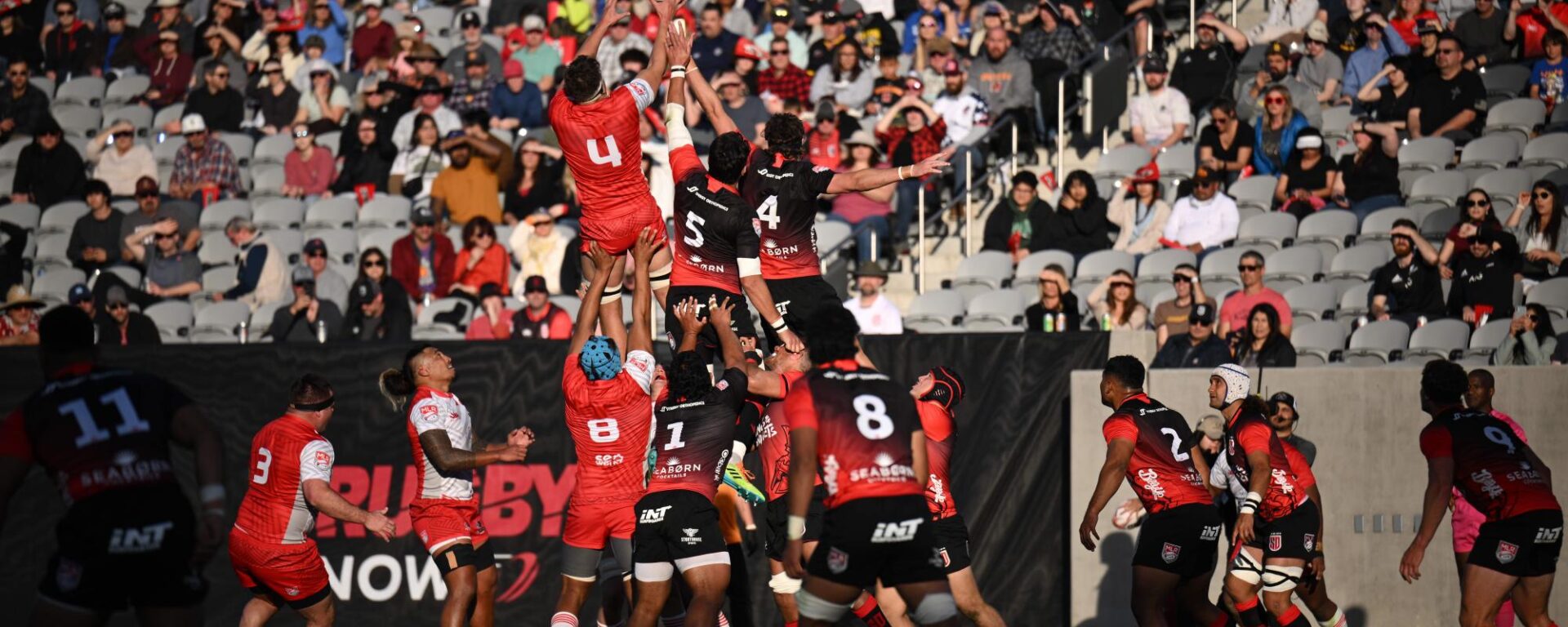
Major League Rugby has endured a tough week with a merger and a withdrawal reducing the competition to nine teams, but the US men’s professional rugby union competition could yet fall to just seven entrants if two more teams fail to raise new funds, the Guardian learned.
The merger of the San Diego Legion and RFC Los Angeles and the exit of the NOLA Gold were announced on Wednesday.
As fans digested that news, multiple league sources told the Guardian the Utah Warriors (like San Diego and NOLA a founding team in 2018) and the Miami Sharks, an expansion team in 2024, were seeking new funding. Sources differed on the likelihood of funding being secured.
Kimball Kjar, a former US Eagles scrum-half now Utah chief executive, said: “Utah Warriors are a founding member of Major League Rugby. We set out to build something special, and we’re still committed to that vision of creating top-end professional rugby in North America.
“We still believe in that vision, and we’re working aggressively to continue on with supporting our partners in Major League Rugby.”
Describing a “hefty financial lift”, Kjar said Utah’s “ownership group has made it clear that they want to bring on additional partners and people that can continue to help accelerate and build and grow in the way that we intend to grow”.
Milagros Cubelli, the Miami CEO, could not be reached for comment.
In the MLR season just completed, the Warriors and Sharks reached the play-offs for the first time. In the Championship Game, in Providence, Rhode Island, the New England Free Jacks beat the Houston SaberCats for a third successive title.
Of the seven teams that kicked off MLR in 2018, only Houston, Utah and the twice-champion Seattle Seawolves remain. San Diego, three times finalists, are now part of the California Legion.
Asked if MLR could continue if shrunk back to seven teams, Commissioner Nic Benson told the Guardian: “I think so. If you have the right seven teams, a strong core, my answer today is yes.”
Benson added: “I think the reality of this is, this is hard. It’s a labor of love and belief for a lot of people that we can build exceptional value in this sport. I still believe that, and I think a lot of the owners still believe that if we get this right, this is viable and will be good for the sport.”
The MLR Players Association said it was working with players affected by the closure and merger, “to provide clarity on next steps and equitable solutions” and to “ensure that players are properly taken care of”.
MLR is far from alone in facing financial headwinds: even in England, the Gallagher Premiership lost three teams in 2022-23 and now appears narrowly to have avoided reducing to nine entrants, a takeover saving Newcastle.
News from MLR may nonetheless prompt concern at World Rugby, less than two weeks after it staged an international doubleheader in Washington DC, heralding concerted investment in the run-up to US World Cups in 2031 (men) and 2033 (women).
Super Rugby (Australia, New Zealand and the Pacific), the United Rugby Championship (Wales, Ireland, Scotland, Italy and South Africa) and R360, a mooted transnational competition fronted by the former England center Mike Tindall, are all reported to be eyeing US ventures.
World Rugby did not respond to a request for comment on MLR from its chief executive, Alan Gilpin. But in DC in mid-July, Gilpin told the Guardian World Rugby had “always believed … there needs to be a domestic professional league in the US that’s growing and thriving [and] we want MLR to be that … that collection of owners, whether we think they’re doing things right or wrong, are putting $70 million a year in, of their own money. That’s not to be dismissed. And so we want MLR to be successful.
“But there’s no doubt that both in terms of providing the best quality product to fans in this market and providing the best opportunities for players to progress in the US … some form of cross-border competition, whether that’s Super Rugby Pacific, URC, or the other things that have been talked about, could be a really good addition.
“But it needs to be not killing [MLR] in the way that happens … So we’ve been in some of those conversations, which I think is positive again.”
World Rugby, Gilpin said, “wants to be helpful, if it can help invest in the structure of the game … our conversation with anybody is, ‘We welcome the investment but you’ve got to come in and work with us, with existing stakeholders, to make that sustainable.’”
On Thursday, Kjar of Utah Warriors likened MLR to a successful US league that endured turbulent beginnings, telling the Guardian: “MLR is really no different from where Major League Soccer was … in 2002 to 2003, where there’s some some hard questions that are being asked, and certain teams and certain ownership groups are … able to provide the best answers to those questions and we feel pretty confident in our situation and what we’re trying to do.
“We’re above all confident in what MLR is, and what our partners have built together.’”
Elsewhere, a current MLR team owner, speaking on condition of anonymity, backed Benson in saying the league could continue even if reduced to seven teams.
“The original number was seven,” the owner said, “so the league functioned with seven. For some reason, people pick that as the demarcation line, like, ‘Below eight probably means we’re not viable.’ We want to play.
“Yeah, there’s a couple question marks. One of the teams that was a question mark feels they’ve got funding.
“What did Winston Churchill say? ‘It’s always darkest before dawn.’ I mean, it’s pretty dark right now. I will say there’s a lot of introspection, and questioning.”
-
Martin Pengelly writes on Substack at The National Maul, on rugby in the US.
